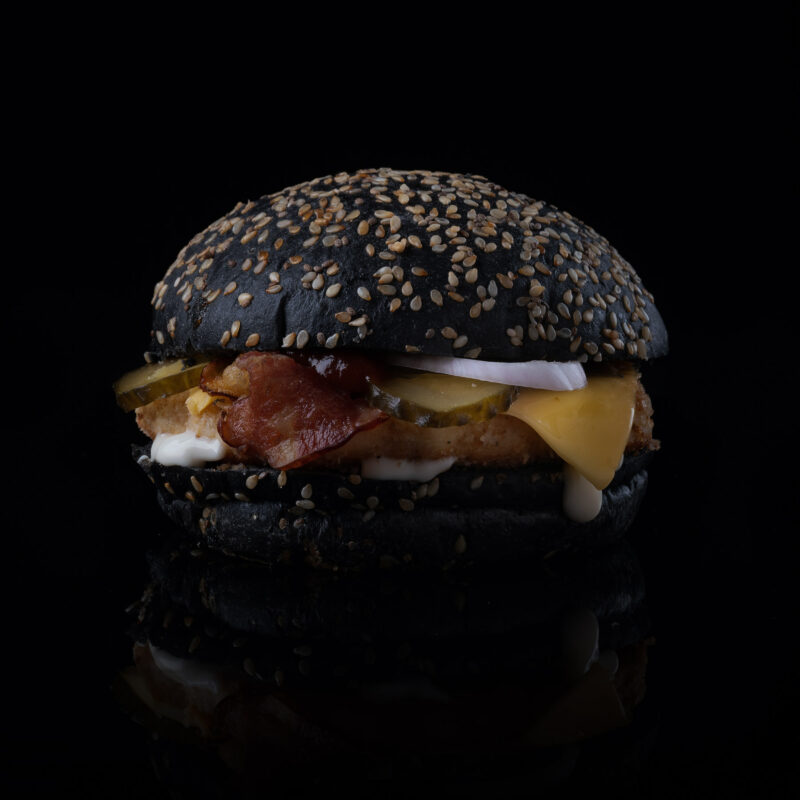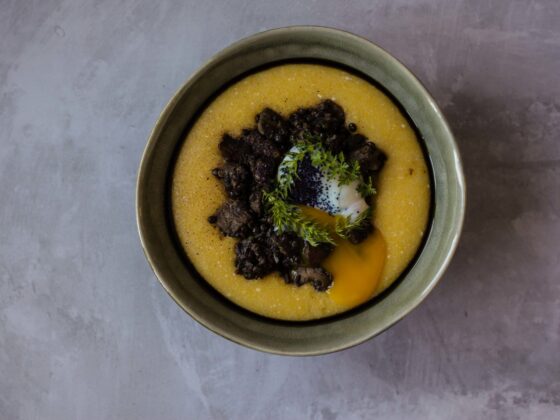Listen to the recording of this article, or read on!
Two years ago, a week after I moved to Vienna, I went for my religious weekend market stroll. I stopped, fascinated, to admire the first morels my eyes had ever laid on. As my curious nose approached the mushroom in all its regal beauty, I was stopped by a loud and unintelligible outcry from the stall-keeper. ‘You’re contaminating them!’ is what my then-boyfriend translated from the old man’s strong Viennese slang. Needless to say, I did not have a cold. And this was pre-coronavirus, too.
As I sit on my couch waiting for this pandemic to end, these lingering thoughts seem a thing of an unimaginable past. And since recently our lives have been a pell-mell sprint between disinfectants and banana bread, smelling fresh produce at the market seems somewhat trivial. And yet, will we ever be able to do that again?
How has corona reshaped our relationship with the world of food and drinks? Have our perceptions and behaviours changed? How is the industry coping with the innumerable challenges? And alas, what is this new normal cuisine?
Habemus gluten
In the first weeks of lockdown, life seemed to only involve sobbing on your sofa, craving your grandma’s meatballs and your mum’s sweet embrace, contemplating the thought of opening yet another bottle of wine as you’re waiting for the pasta to boil. Then, apathy turned us into gourmet cooks.
One thing is clear: at home, the new-normal cuisine flourished under the supreme reign of the carbohydrate. The once abundant shelves of flour and yeast were empty for a while. Victory depended on how quickly one managed to bring their sourdough starter to life. The omnipresence of starch also obliterated the once validated keto diet. Instead, yolk porn was replaced by a triumphant parade of section cuts and scoring videos, that lavishly display air bubbles forming in well leavened bread. Every week, those against the tide retaliated with a new way to chemically transform gluten into edible delights – focaccia, pizza, cakes, brioche buns… After all, societies evolved around the prevalence of our daily bread. Is this what a new wave of culinary sophistication looks like?
In a time when fashion revolves around designer face masks and the only travelling one does is between the sofa and the fridge, social media influencers became home cooks, too. Gastronomic literacy reached a new peak. Instagram turned into a pot-pourri of recipes and Tiger King memes, and in that online space, the most gruelling fight in the war against coronavirus was between those who made banana bread and those who didn’t.
In the restaurant realm
Restaurants had to choose whether to give up, feed front liners, or those still scared to cook. To some, survival through the struggle and discourage of this crisis would have been a pyrrhic victory unworthy of a fight. To others, survival meant reinventing business models and finding opportunities where there seemed to be none.
Instead of waiting for the guests to arrive, restaurants, bars and coffeeshops found ways into their guests’ homes. Even fine dining isn’t what it once was. The beautifully plated artisan dishes now come in boxes with plating instructions. High end restaurants that served luxurious ingredients have turned to comfort food. Cloud kitchens have taken over – everywhere in the world. Initiatives appeared, on a quest to encourage those staying at home to support their local businesses.
Many restaurants started delivering crates of vegetables, dairy and meat from their producers, on top of their weekly menus. Others made their lists of suppliers public and encouraged their community to support them during these difficult times.
What’s survival of the fittest when a whole industry is in a precarious position?
Gabrielle Hamilton closed down her restaurant, Prune. Her touching story exposed just how fragile this industry is. Dave Chang recently announced the closure of two of his restaurants – even empires are at risk. Noma replaced their seasonal banquets with burgers and wine – no reservation, no waiting list, none of the pre-corona furor to get a table at one of the world’s most sought-after restaurants. If pompousness was already dead, now it really is the time to get our hands dirty with dripping burger juices. And just like the rest of the internet, I also wonder – will fine dining be the same again?
The limited seating capacity that follows the lockdown changes the dynamic of once buzzing places. Cashflow remains a challenge – even the smallest revenue loss can turn into the slow death of a loved restaurant. As crowds queue to pick up their McDonald’s order, small business owners beg their communities to book their tables and be mindful about their reservation. If quarantine was a difficult time, reopening is even harder. And it comes with a large deal of education.
Manners aren’t measured by how well you know the order of the cutlery anymore, but by how responsible you are as a consumer. Book your table in advance. Tell the restaurant or bar how long you’d like to stay for, so they can take in new reservations. Don’t stretch your drink for hours. Keep placing orders at home too, if at all possible. Share your experiences on social media to entice others to visit. Ask how else you can help. Pick up your order, instead of getting a delivery. Share your gratitude and support…
Onwards and upwards
As history showed us, times of crisis lead to large doses of ingenuity. And despite our usual aversion towards change, we, humans, can adapt quickly when we have no other choice. Restaurants will change, bars will change, the way we consume will change. Thankfully, our appreciation of a well-crafted dish, or fragrant cocktail will keep growing. So, as you finish reading this, go stretch and fold your sourdough one last time, then pick up your phone and reserve a table at your favourite restaurant or bar. The industry needs you more than ever!




